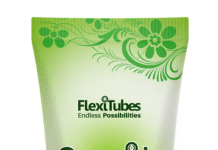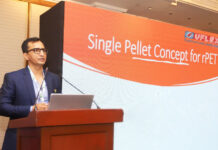Counterfeit products are a matter of concern to product manufacturers and consumers. The Indian packaging industry is also hunting for – and providing effective solutions to tackle counterfeiters, who are also getting smarter. UFlex’s holography division sheds some light on why and how fake products take up market space, and how it aims at developing and marketing holographic products and solutions that offer brand enhancement, value addition, and enhanced aesthetics in packaging.
According to Yogesh Kapur, the Noida-based company’s executive vice-president of the holography business, the company is providing services and solutions by leveraging the best technology, in-house production, and an R&D division for each of UFlex’s processes. India is becoming a preferred supplier for global buyers of products, including anti-counterfeiting and brand building solutions.
“India is at the cusp of growth, and from what we can see, a lot of global companies are trying to be a part of it. UFlex is well-positioned to tap this growing market with its country-wide footprint, by providing the latest technology for anti-counterfeiting, and brand recognition,” Kapur said in an interaction with Packaging South Asia. “Global providers, when they come to India, are concerned about their IP because of counterfeiting. This is where UFlex holography anticounterfeiting and branding solutions come in and ensure that their IP is protected and genuine products reach their (brand owners’) customers.”

“We are no longer willing to be followers; we want to be the leaders,“ Kapur says. “Developing products and solutions to turn imagination into a reality is what UFlex is all about, backed by our full-fledged R&D. We are concerned about the counterfeiters as the life of branded products is getting shorter. Counterfeiters can catch up with the processes. Textiles, cosmetics, perfume, liquor, food, and pharma brands are all at risk, and we provide solutions that enable the customer to differentiate between fake and authentic products.
How counterfeiters get in
A customer wanting to buy an authentic product feels cheated if his or her purchase is a counterfeit. “eCommerce has in some cases enabled the intervention of counterfeiters,” says Kapur. “A product now has more pit-stops after it is shipped from the warehouse. Tampering has become more convenient, wherein the original product gets replaced by a counterfeit and later sold elsewhere. A customer may not always be able to identify if a product is real or fake just by a glance. Moreover, a bad experience will always lead to a drop in current and future sales.”
According to Kapur, price-competition is also part of the problem. “The problem gets worse when we see a product similar to the original on a website, but cheaper, and we purchase it without a second thought. What finally lands at our place, if it is a shirt, is of low quality and not as comfortable as we expected. Fabric bleeding is among the most common problems in textile products. If the food or beverages we consume are fake, we can’t even pinpoint what problems it could cause. The concerns are becoming more tangible and the time to act is now,” he said.
Offering hyper-competitive solutions was a common practice in the packaging industry but the providers are realizing that what comes cheap is even easier for counterfeiters to duplicate. Technology, methodology, and sustainable practices are gaining traction. Kapur feels if value-proposition replaces cost-effectiveness with technology at its center, the counterfeiters can be stopped. “A hologram today is different from what it was a couple of years ago. But the counterfeiters are also catching up fast. A hologram can be replicated unless you add certain security features – which are both overt and covert.”
Incorporating the right technology
Kapur says UFlex has the resources to develop any hologram with its significant manufacturing advantage, through inhouse backward integration of major raw material suppliers. And if they can do it so easily, there are chances that even the counterfeiters might be able to catch up. So, uniqueness is of utmost significance, he said. “The industrialists know that holograms authenticate a product but often choose cost-effective solutions – unknowingly enabling counterfeiters to easily replicate them. UFlex has always tried to be ahead of the curve when it comes to providing unique and innovative solutions. Since all products are different, their treatment should be targeted as well. And this is why we are always ahead in technology.











